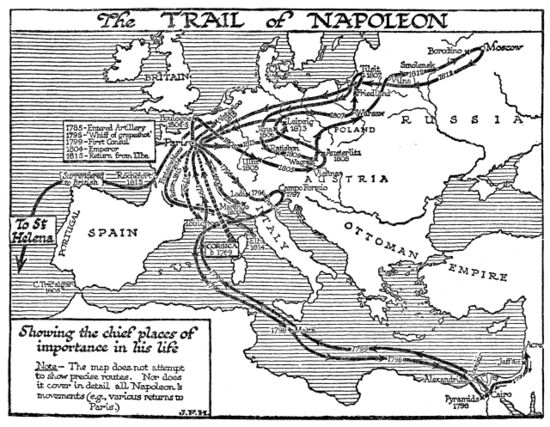imported>Chunbum Park |
imported>John Stephenson |
| (134 intermediate revisions by 5 users not shown) |
| Line 1: |
Line 1: |
| == '''[[Electroconvulsive therapy]]''' ==
| | {{:{{FeaturedArticleTitle}}}} |
| ''by [[User:Gareth Leng|Gareth Leng]]
| | <small> |
| | | ==Footnotes== |
| ----
| |
| | |
| '''Electroconvulsive therapy''' ('''ECT''') is a [[psychiatry|psychiatric]] treatment that involves inducing a seizure in a patient by passing electricity through the brain. ECT was introduced for treating [[schizophrenia]] by the Italian neurologist [[Ugo Cerletti]] in the 1930s, and became a common treatment for mood disorders. While many psychiatrists believe that properly administered ECT is a safe and effective treatment for some conditions, some psychiatrists, former patients, [[antipsychiatry]] activists, and others warn that ECT might harm the patients' subsequent mental state.
| |
| | |
| ECT was a common treatment until the late 20th century, when better drug therapies became available for more conditions. It is now reserved for severe cases of clinical [[depression]] and [[bipolar disorder]] that do not respond to other treatments. When still in common use, ECT was sometimes abused by mental health professionals to punish or control uncooperative patients. Many people came to view ECT unfavorably after negative depictions of it in several books and films, and the treatment is still controversial.
| |
| | |
| In its early days, ECT was given without anaesthesia or muscle relaxants, and patients were often injured as a side effect of the seizure. Now, ECT is given under anaesthesia and with muscle relaxants. ECT without anaesthesia is known as "unmodified ECT", or "direct ECT", and is illegal in most countries.
| |
| | |
| ==Current use==
| |
| ECT is mainly used to treat severe depression, particularly if complicated by psychosis<ref>{{cite journal | author=Potter WZ, Rudorfer MV | title=Electroconvulsive therapy--a modern medical procedure | journal=N Engl J Med | volume=328 | issue=12 | pages=839–46 | year=1993 | id=PMID 8441434}}; see also [http://consensus.nih.gov/1985/1985ElectroconvulsiveTherapy051html.htm]</ref>. It is also used in cases of severe depression when antidepressant medication, psychotherapy, or both, have been ineffective, when medication cannot be taken, or when other treatments would be too slow (e.g. in a person with delusional depression and intense, unremitting suicidal tendencies). Specific indications include depression accompanied by a physical illness or pregnancy, which makes the usually preferred antidepressants dangerous to the patient or to a developing fetus. It is also sometimes used to treat the manic phase of bipolar disorder and the rare condition of catatonia. In the USA, modern use of ECT is generally limited to evidence-based indications. <ref>{{cite journal | author=Hermann R ''et al.'' | title=Diagnoses of patients treated with ECT: a comparison of evidence-based standards with reported use. | journal=Psychiatr Serv | volume=50 | pages=1059-65 | year=1999 | id=PMID 10445655}}</ref> Accurate statistics about the frequency, context and circumstances of ECT in the USA are hard to obtain, as few states have laws that require this information to be given to state authorities. <ref>{{cite news | first = Dennis | last = Cauchon | title = Controversy and Questions Shock Therapy: Patients often aren't informed of full danger | publisher = USA Today | date = 1995-12-06 }}</ref>
| |
| | |
| ''[[Electroconvulsive therapy|.... (read more)]]''
| |
| | |
| {| class="wikitable collapsible collapsed" style="width: 90%; float: center; margin: 0.5em 1em 0.8em 0px;"
| |
| |-
| |
| ! style="text-align: center;" | [[Electroconvulsive therapy#Footnotes|notes]]
| |
| |-
| |
| |
| |
| {{reflist|2}} | | {{reflist|2}} |
| |}
| | </small> |
Latest revision as of 10:19, 11 September 2020
Napoleon (Napoleon Bonaparte or, after 1804, Napoleon I, Emperor of the French) was a world historic figure and dictator of France from 1799 to 1814. He was the greatest general of his age--perhaps any age, with a sure command of battlefield tactics and campaign strategies, As a civil leader he played a major role in the French Revolution, then ended it when he became dictator in 1799 and Emperor of France in 1804 He modernized the French military, fiscal, political legal and religious systems. He fought an unending series of wars against Britain with a complex, ever-changing coalition of European nations on both sides. Refusing to compromise after his immense defeat in Russia in 1812, he was overwhelmed by a coalition of enemies and abdicated in 1814. In 1815 he returned from exile, took control of France, built a new army, and in 100 days almost succeeded--but was defeated at Waterloo and exiled to a remote island. His image and memory are central to French national identity, but he is despised by the British and Russians and is a controversial figure in Germany and elsewhere in Europe.
Rise to Power
Once the Revolution had begun, so many of the aristocratic officers turned against the Revolutionary government, or were exiled or executed, that a vacuum of senior leadership resulted. Promotions came very quickly now, and loyalty to the Revolution was as important as technical skill; Napoleon had both. His demerits were overlooked as he was twice reinstated, promoted, and allowed to collect his back pay. Paris knew him as an intellectual soldier deeply involved in politics. His first test of military genius came at Toulon in 1793, where the British had seized this key port. Napoleon, an acting Lieutenant-Colonel, used his artillery to force the British to abandon the city. He was immediately promoted by the Jacobin radicals under Robespierre to brigadier-general, joining the ranks of several brilliant young generals. He played a major role in defending Paris itself from counter-revolutionaries, and became the operational planner for the Army of Italy and planned two successful attacks in April 1794. He married Josephine (Rose de Beauharnais) in 1796, after falling violently in love with the older aristocratic widow.[1]
- ↑ Englund pp 63-73, 91-2, 97-8
